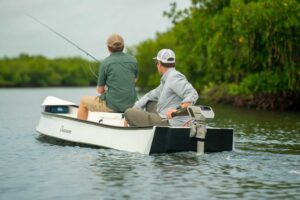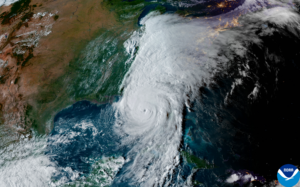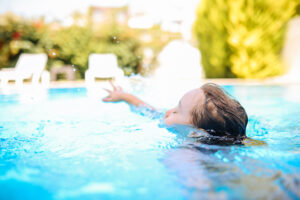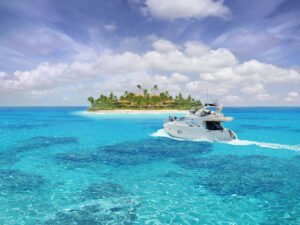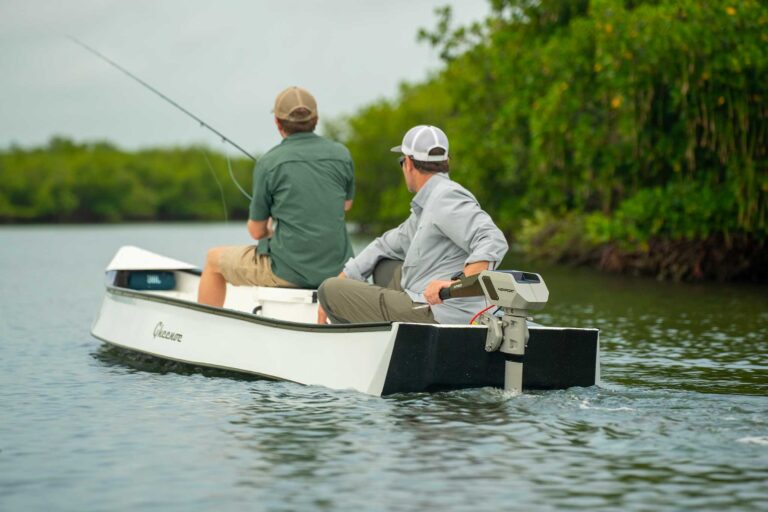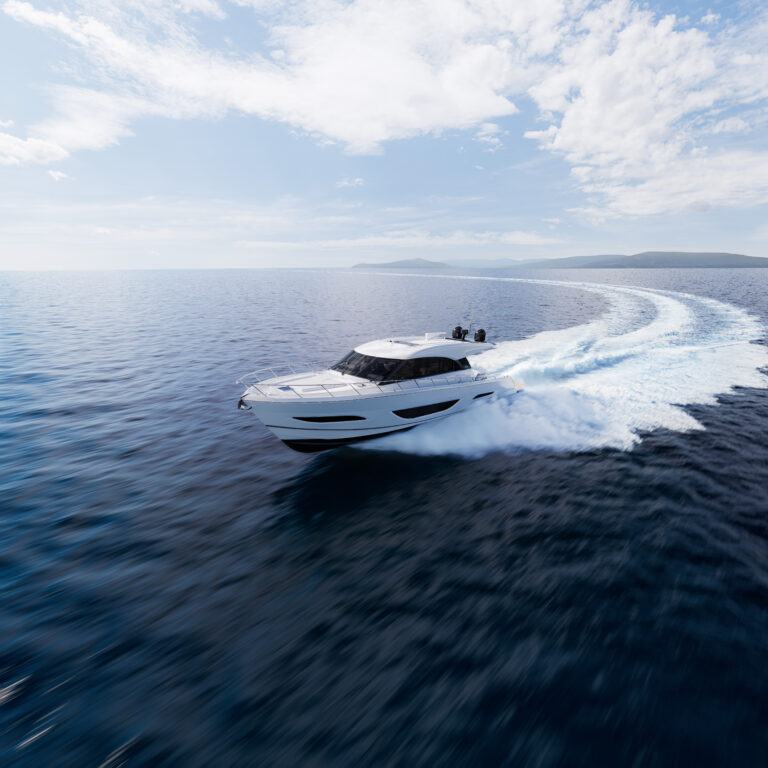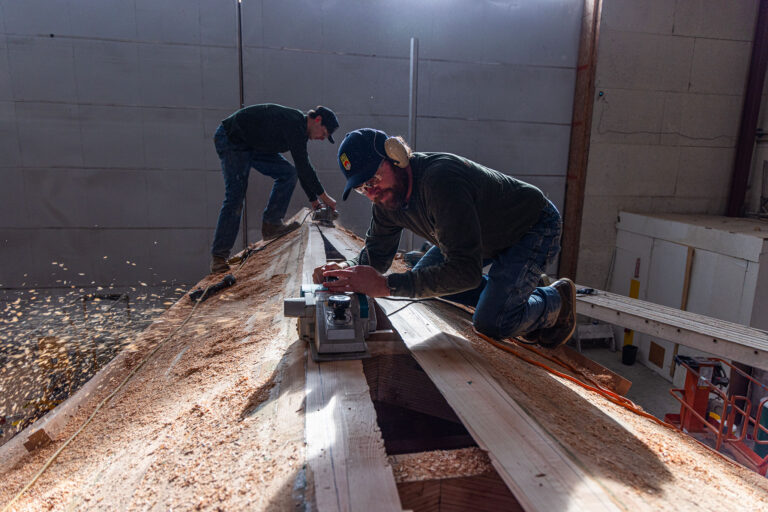Why cruisers should set a course for Cat Island, where architecture, history and spirtituality merge
Fewer cruisers visit Cat Island and Eleuthera than, say, the Exumas because of a conflict between geography and cruising culture. And that is why, on a sunny afternoon in May, Kelly and I found ourselves standing at the highest place in the Bahamas, exploring one of the island nation’s unique treasures all by ourselves.
We had never visited these locations, so I was determined to include them both on our route as we sailed Rio, our old 41-foot Morgan ketch, from the Dominican Republic to the Abacos. That’s how we came to be at the peak of Mount Alvernia (elevation: 206 feet above sea level), communing with the spirit of Cat Island’s most notable resident, the late Father Jerome.
The most beautiful feature of the Bahamas is the water. The islands for the most part are flat, scrubby and unremarkable. The surrounding sea, however, treats the human eye to swaths of color ranging from the darkest blue to aquamarine, and to something resembling Pinot Grigio near the place at which the sea gives way to beach. Beneath the water, coral reefs comprise entire lush worlds of stunningly beautiful, brightly colored sea life.
One man who brought beauty and proportion to the Bahamian landscape was an eccentric priest remembered here as Father Jerome.
Spirituality by design
Father Jerome, who lived from 1876 to 1956, was a trained architect who designed and built many churches in the Bahamas. The three I’ve seen were whitewashed, and I can only describe their style as Greco-Celtic with that Moorish influence so often found in old Mediterranean architecture.
My favorite was the more eccentric of the two churches Father Jerome built at Clarence Town on Long Island. From our slip at the Flying Fish Marina, we could see its twin towers. This was the village’s Roman Catholic church. To me it hardly seemed to belong to the land with its ranch houses and metal commercial buildings. It was like a relic left behind by a retreating sea, as if the religion of mythological Atlantis had worshipped the Catholic Jesus.
Father Jerome had overseen the construction of the other Clarence Town church years before his conversion to Romanism, when he was serving as an Anglican priest. The English brand of Christ worship must have tasted like weak tea to this deeply spiritual Englishman.
After Long Island we came to Cat Island, where we spent an afternoon on the ironically named “Mount” Alvernia. It was here that Father Jerome had created his masterpiece, the Hermitage. He had built himself a retirement home from thousands of stones, a one-man monastery that looks ancient, as if plucked from an Irish landscape. Indeed, the green and hilly landscape of Cat Island, as seen from Mount Alvernia, evokes pictures of Ireland, until the eye wanders far enough westward to take in the blue-green Bahamian shallows.
The quiet of a cathedral
Passing the gate at the base of the hill, Kelly and I had climbed the steep, rock-strewn front yard of the Hermitage. Having read that Father Jerome had manually hauled the rocks and mortar to the summit, I at first assumed that he had used a second path, the longer but less strenuous route to the backside of the site. Now I wonder. The frontal path was lined by Jerome’s concrete bas-relief “stations of the cross,” so maybe he lugged his materials on the more difficult route as a form of penitence.
“A proper church is no mere assembly hall, theatre or auditorium for preaching and community singing, but it is first of all a place of sacrifice,” Monsignor John Cyril Hawes wrote years before assuming the name Father Jerome. “It should breathe forth an atmosphere of prayer of religious awe and supernatural mystery.”
Even in the Hermitage’s tiny chapel with its single pew, into which Kelly and I had tip-toed, Father Jerome succeeded in that philosophy. A few yards away his tiny sleeping quarters still featured his simple planked bed, no bigger than a ship’s berth. In the stone tower still hangs a big bell, rusted now and silent.
My sense of awe for the forces of nature never translated itself into even a whiff of religious belief, but that doesn’t mean I couldn’t see a tiny bit of myself in this man’s work.
A requisite history lesson
He had spent a career doing many things, including building churches and a cathedral in Australia, all of which are now considered national treasures there. His tenure Down Under had been anything but peaceful, however, as he toiled in and out of favor, depending on which bishop held sway.
Finally in 1939 he wanted out — and badly enough to leave his respected position in Australia. He returned to the Bahamas of his Anglican youth. Here on Cat he built himself the Hermitage like other men might build a boat, and he anchored his soul beneath the undiluted stars.
Except the anchor dragged; the plan failed.
Father Jerome became a celebrity here. His skills were in great demand, and so he went back to work building churches, a convent, a monastery and a boy’s college, all in the Bahamas. If I may summarize one biographer, Father Jerome worked himself to death. And he did not die in his monk’s bed but across the water at a Catholic Hospital in Miami.
But we didn’t know much about Father Jerome as we poked around his retreat, and so we got to glimpse the man’s dream unencumbered by the reality. I only wish we had brought a picnic lunch and a bottle of wine — the body and blood, if you will.
I suppose we should be happy that so few cruisers pass by Cat Island compared to the numbers that make the annual trek down the Exumas. We should be happy to have had the Hermitage all to ourselves on that beautiful day in May.
Preaching from the pulpit
Earlier I explained this as a conflict between geography and cruising culture.
In my opinion, the cruisers who sail to the Bahamas during winter year after year — and that’s the majority of them — have got it all wrong. They decide to visit these islands, not when the weather is best in the Bahamas, but when the weather is worst at home.
Between December and March the Bahamian islands are beset by “northers,” frontal passages with vigorous clocking winds that roll down the archipelago on a near-weekly basis. That’s why you find anchorages with anything resembling all-around protection dangerously crowded during April through July: the weather is settled. Winds are nearly always from the east with only occasional squalls to break the pattern.
This is the best time to be here — after the northers have ceased, but before hurricane season reaches its peak. Late October to early December ain’t bad either. During these periods you can anchor just about anywhere.
And you could anchor just about anywhere along the 45-mile western shore of Cat Island and be sheltered from the prevailing easterlies. This includes New Bight at the foot of Mount Alvernia itself. If you sail there during winter, however, you will find almost nowhere with protection from winds clocking from the west through north.
Consequently, few Bahamas cruisers ever get to see Father Jerome’s most endearing work, because they’ve come and gone before the weather has settled.
If any readers have thoughts of a Bahamian cruise, I encourage them to have the common sense to defy the cruising culture. There will be space aplenty in the anchorages, the water will feel warmer for swimming, their passages will be less stressful and they, too, will be able to commune with the spirit of Father Jerome. And if they climb Mount Alvernia, do us one better; bring along a picnic and that jug of Sangria.
’Til next time.
Peter Swanson, 51, is sailing southern waters aboard his ketch-rigged Morgan Out Island 41. Besides his journalism credentials, he holds a 50-ton Coast Guard master’s license. His ambition to cruise the coast of Cuba is so premature that he founded a Web site dedicated to this virtually non-existent pastime: www.cubacruising.net.


